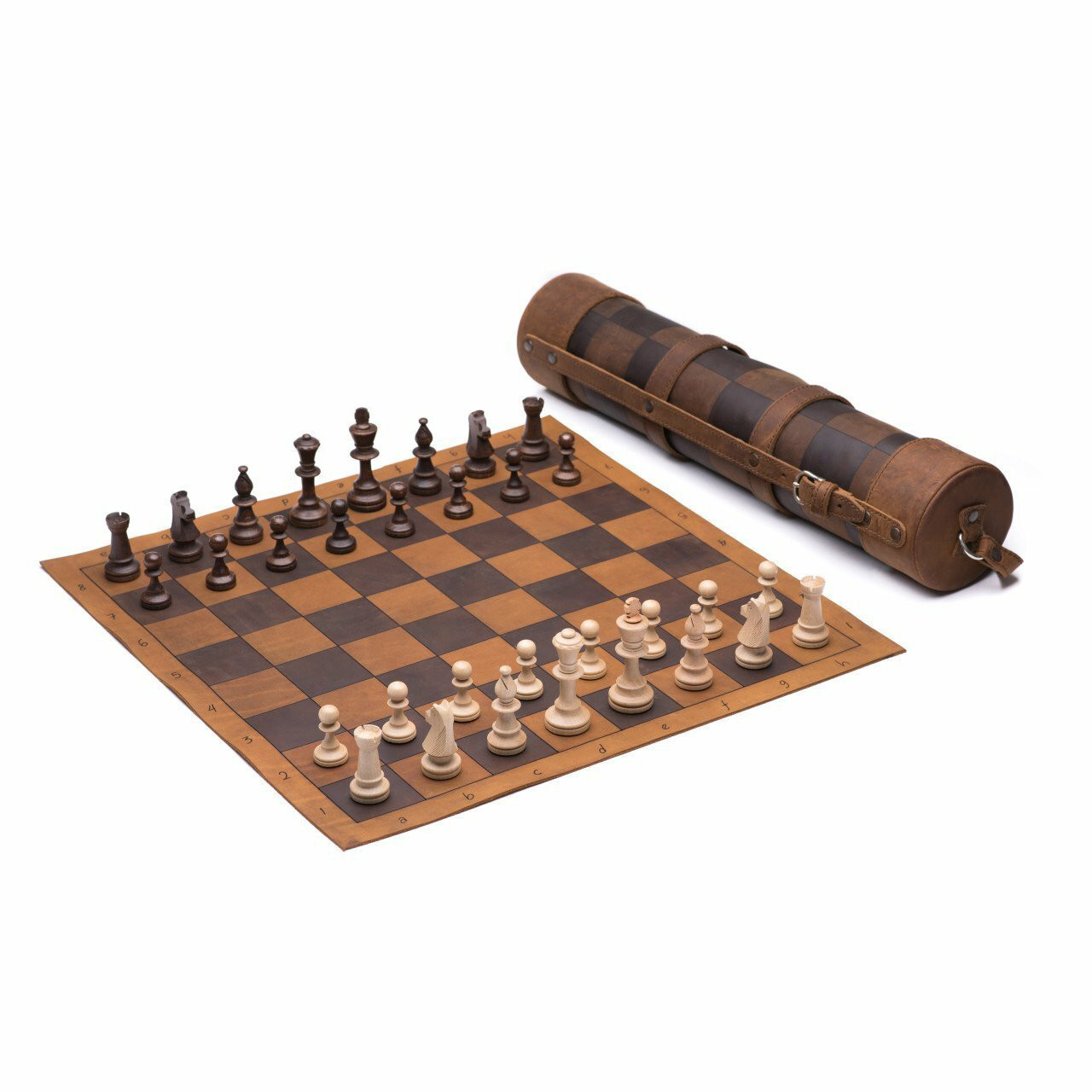Chess is a game of strategy and foresight. Advanced players need openings that offer depth and flexibility.
Understanding the best chess openings can give you a significant edge. As an advanced player, you already know the basics. Now, it’s time to delve into openings that challenge your opponent and set you up for a strong middle game.
These openings are not just about the first few moves but the plans they initiate. They can dictate the flow of the game, forcing your opponent to react. By mastering advanced openings, you enhance your control over the board. This article will guide you through some of the most effective openings for advanced players, helping you refine your strategy and outmaneuver your competition.

Credit: www.youtube.com
Sicilian Defense
The Sicilian Defense is a popular and powerful opening for advanced players. It begins with the moves 1.e4 c5 and aims to create imbalances on the board. This opening offers numerous tactical and strategic opportunities, making it a favorite among top players.
Najdorf Variation
The Najdorf Variation is one of the most respected lines in the Sicilian Defense. It begins with the moves 1.e4 c5 2.Nf3 d6 3.d4 cxd4 4.Nxd4 Nf6 5.Nc3 a6. This setup allows Black to prepare for both defensive and counter-attacking strategies.
Key ideas of the Najdorf Variation:
- Control the center with pawns.
- Flexible pawn structures.
- Strong counter-attack potential.
Many grandmasters have used the Najdorf Variation with great success, making it a critical line for advanced players to study.
Dragon Variation
The Dragon Variation is another aggressive line in the Sicilian Defense. It starts with the moves 1.e4 c5 2.Nf3 d6 3.d4 cxd4 4.Nxd4 Nf6 5.Nc3 g6. This setup allows Black to fianchetto the bishop on g7, exerting pressure on the center and queenside.
Key ideas of the Dragon Variation:
- Fianchettoed bishop on g7.
- Strong control of the center.
- Potential for quick attacks on the kingside.
Advanced players appreciate the Dragon Variation for its dynamic and sharp positions. It requires precise calculation and deep understanding, making it both challenging and rewarding.
Ruy Lopez
The Ruy Lopez, also known as the Spanish Opening, is one of the oldest and most respected openings in chess. It starts with the moves 1. e4 e5 2. Nf3 Nc6 3. Bb5. This opening provides a solid foundation and numerous strategic opportunities. Advanced players often use it to gain a positional advantage early in the game.
Closed Ruy Lopez
The Closed Ruy Lopez is characterized by the move 3… a6, followed by 4. Ba4 Nf6 5. O-O Be7. This sequence leads to a rich and complex middlegame. The Closed Ruy Lopez is favored for its deep strategic possibilities.
Here are some key points:
- White aims to control the center with d2-d4.
- Black looks for counterplay on the queenside.
- Both sides develop pieces while preparing for central tension.
Advanced players should study common plans and typical pawn structures in this variation. The Closed Ruy Lopez demands precise play and a good understanding of positional concepts.
Open Ruy Lopez
The Open Ruy Lopez occurs after the moves 3… a6 4. Ba4 Nf6 5. O-O Nxe4. This variation leads to open positions and tactical battles.
Key ideas in the Open Ruy Lopez include:
- White tries to regain the pawn with d2-d4.
- Black aims to exploit the open lines and active piece play.
- Both players need to be aware of tactical opportunities.
Advanced players appreciate the dynamic nature of the Open Ruy Lopez. It requires accurate calculation and a keen eye for tactics. This variation is less common but highly effective for those who enjoy sharp, open games.
King’s Indian Defense
The King’s Indian Defense is a popular and aggressive chess opening. It offers many strategic possibilities for advanced players. This opening often leads to complex and dynamic positions. It is a favorite among many grandmasters. Let’s explore two key variations: the Classical Variation and the Fianchetto Variation.
Classical Variation
The Classical Variation of the King’s Indian Defense is highly respected. It starts with the moves: 1. d4 Nf6 2. c4 g6 3. Nc3 Bg7 4. e4 d6 5. Nf3 O-O 6. Be2 e5. White usually responds with 7. O-O, followed by 8. d5.
This setup aims to control the center. The game often becomes a battle between White’s pawn center and Black’s counterplay on the wings. The Classical Variation is rich in tactical opportunities. It requires deep understanding and accurate calculation. Mastery of this variation can lead to exciting and rewarding games.
Fianchetto Variation
The Fianchetto Variation is another strong option in the King’s Indian Defense. It begins with: 1. d4 Nf6 2. c4 g6 3. Nf3 Bg7 4. g3. This setup helps White control the center with a solid pawn structure.
In this variation, White fianchettos the bishop to g2. This move strengthens the long diagonal. Black usually responds with 4… O-O 5. Bg2 d6 6. O-O. The game often focuses on the struggle for the center. The Fianchetto Variation is known for its strategic depth. It provides both sides with many interesting plans and ideas.
Advanced players appreciate the Fianchetto Variation for its flexibility. It allows for many different strategies. This variation can lead to both sharp and positional battles. It’s a great choice for those who enjoy intricate and deep positions.
French Defense
The French Defense is a popular choice for advanced chess players. It focuses on solid pawn structure and counter-attacks. This defense can be tricky for opponents. The French Defense starts with 1. e4 e6.
Winawer Variation
The Winawer Variation is a sharp and complex choice. It starts with 1. e4 e6 2. d4 d5 3. Nc3 Bb4. This line challenges White’s center early. Black often gains the bishop pair. White must play carefully to avoid losing the center.
In the Winawer, Black can create imbalances. This variation often leads to rich, tactical battles. Advanced players enjoy the deep strategy here. The Winawer forces White to think strategically from the start.
Classical Variation
The Classical Variation is solid and reliable. It starts with 1. e4 e6 2. d4 d5 3. Nc3 Nf6. This line focuses on pawn structure and piece placement. Black aims for a strong, defensive setup.
In the Classical, Black develops pieces harmoniously. This variation leads to balanced positions. Both sides have chances for counterplay. Advanced players appreciate the strategic depth here. The Classical often results in long, strategic games.
Queen’s Gambit
The Queen’s Gambit is one of the oldest and most popular chess openings. It involves a strategic pawn sacrifice to control the center. Advanced players often use it to gain a strong positional advantage.
Accepted Variation
In the Queen’s Gambit Accepted, Black captures the pawn on d4. This opening starts with 1. d4 d5 2. c4 dxc4. It leads to open positions. White aims to reclaim the pawn with quick development. This variation tests tactical skills and deep understanding of positional play.
Declined Variation
The Queen’s Gambit Declined keeps the tension in the center. It begins with 1. d4 d5 2. c4 e6. Black does not capture the pawn immediately. This variation results in solid, closed positions. It focuses on long-term strategic planning. Players must be patient and precise.
Caro-kann Defense
The Caro-Kann Defense is a solid and reliable chess opening. Advanced players prefer it for its defensive strength. It starts with the moves 1. e4 c6. This opening aims to control the center of the board and build a strong pawn structure.
Advance Variation
The Advance Variation of the Caro-Kann starts with 1. e4 c6 2. d4 d5 3. e5. This line pushes the pawn forward to gain space. Black usually responds with 3… Bf5 or 3… c5. The goal is to challenge White’s center control. This variation leads to complex middlegame positions. Both sides need careful planning.
Classical Variation
The Classical Variation begins with 1. e4 c6 2. d4 d5 3. Nc3. This move develops a knight and adds pressure. Black often plays 3… dxe4, capturing the pawn. White recaptures with 4. Nxe4, leading to an open game. This variation allows for quick development of pieces. It often results in balanced positions. Both players need to be alert for tactical opportunities.
Nimzo-indian Defense
The Nimzo-Indian Defense is a popular chess opening among advanced players. It begins with the moves 1.d4 Nf6 2.c4 e6 3.Nc3 Bb4. This opening aims to control the center and prepare for a strong defense. It provides black with solid, flexible positions.
Rubinstein Variation
The Rubinstein Variation is one of the most respected lines in the Nimzo-Indian Defense. It starts with 4.e3. This move is solid and prepares for the development of the bishop to d3. It also supports the center and keeps the pawn structure intact. Advanced players prefer this variation for its balance between safety and potential for a counterattack.
Classical Variation
The Classical Variation in the Nimzo-Indian Defense begins with 4.Qc2. This move protects the pawn on c4 and avoids doubled pawns. It also keeps the queen active and ready for future tactics. This variation is favored by advanced players for its aggressive yet sound approach. It allows for dynamic play and strategic complexity.

Credit: www.uscfsales.com
Grünfeld Defense
The Grünfeld Defense is a popular opening among advanced chess players. It offers dynamic play and counter-attacking chances. This defense often leads to an unbalanced position, which can be exciting.
Black aims to challenge White’s center early. This opening has been played by many world champions. It remains a strong choice for those seeking complex and rich positions.
Exchange Variation
The Exchange Variation is a critical test for the Grünfeld Defense. In this line, White exchanges pawns in the center. This leads to an open game and active piece play.
Black often fianchettos the bishop to g7, aiming for pressure on the center. White must be careful and precise to maintain an advantage. This variation often results in dynamic and tactical battles.
Russian System
The Russian System is another important line in the Grünfeld Defense. Here, White develops the knight to f3 and the bishop to g5. This setup aims to put pressure on Black’s knight on f6.
Black typically responds with …d5 and …Nbd7, keeping the position flexible. The Russian System can lead to rich, strategic play. Both sides need to know many plans and ideas to navigate this variation well.

Credit: www.youtube.com
Frequently Asked Questions
What Are The Best Chess Openings For Advanced Players?
Advanced players often excel with openings like the Ruy Lopez, Sicilian Defense, and King’s Indian Defense. These openings offer complex strategies and flexibility, catering to deep tactical play. Mastery of these openings can provide a significant edge in high-level games.
Why Is The Ruy Lopez Popular Among Advanced Players?
The Ruy Lopez is popular because it offers rich strategic possibilities. It allows for deep, complex middlegame positions. Advanced players appreciate its flexibility and the wealth of theoretical knowledge available. This opening can lead to both aggressive and positional play.
How Does The Sicilian Defense Benefit Advanced Players?
The Sicilian Defense is highly dynamic and creates unbalanced positions. It offers numerous counterattacking opportunities. Advanced players thrive on its complexity and rich tactical possibilities. This defense requires a deep understanding of various sub-variations to maximize its potential.
What Makes The King’s Indian Defense Effective?
The King’s Indian Defense is effective due to its aggressive and flexible nature. It allows black to build a strong counterattack. Advanced players use it to create dynamic and complex positions. Its rich theory and strategic depth make it a favorite among experienced players.
Conclusion
Mastering chess openings offers a strong advantage in advanced play. Practice these openings to enhance your strategy and foresight. Keep exploring and adjusting your moves based on opponents’ tactics. Stay curious and dedicated. Chess is a journey of continuous learning.
Enjoy the process and grow with each game. Your dedication will pay off. Happy playing!







